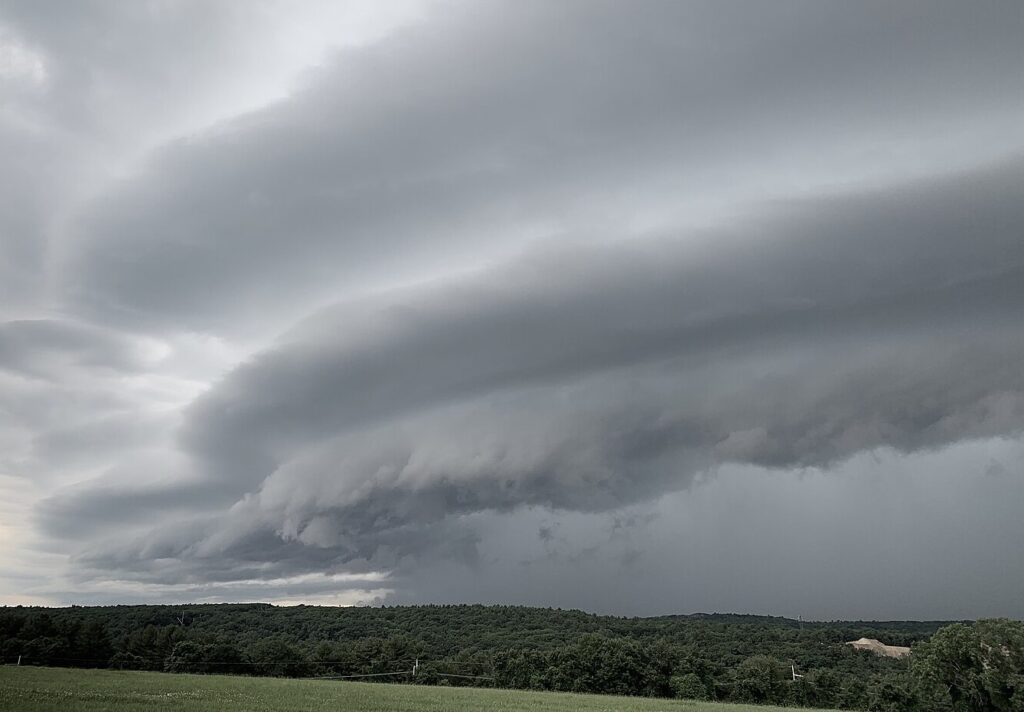As nature’s most dramatic and awe-inspiring displays, storm clouds have the power to both terrify and mesmerize us. These towering formations are not just harbingers of inclement weather but also serve as beautiful works of art painted across the sky. In this blog post, we delve into three different types of storm clouds that grace our skies: cumulonimbus, nimbostratus, and arcus clouds, each with its own unique appearance.

Cumulonimbus Clouds: the King of Storm Clouds

Cumulonimbus Clouds are big, heavy looking clouds, producing thunder, lightning, heavy rain, strong wind, and even hail. When we think of storm clouds, these are the ones. These clouds have a distinctive anvil shape, with a flat, spreading bottom. Their base is often dark and ominous, while their tops may be fluffy and white.
Cumulonimbus clouds often start growing from smaller cumulous clouds where the weather temperature is unstable. They grow bigger and bigger, becoming massive and powerful clouds bringing severe weather.
Nimbostratus Clouds: a Gray Blanket

Nimbostratus clouds are thick, dark clouds that cover the sky like a blanket. They have a uniform, featureless appearance, often blocking out the sun entirely. Nimbostratus clouds are responsible for prolonged periods of rain or snow, and bring gloomy and overcast conditions for an extended period.
Along a warm weather front, nimbostratus clouds form from the thickening of thin altostratus clouds. These clouds extend through the lower and middle layers of the earth’s atmosphere bringing rain that sometimes lasts for hours.
Arcus Clouds: Shelf or Rolling Storm Clouds

Arcus clouds are low level clouds with a unique appearance, often resembling a shelf or a rolling cloud. Their distinct shape stands out in the sky, making them a favorite for nature photographers. Like cumulonimbus clouds, they bring powerful thunderstorms.
Arcus clouds form due to the interaction of air masses of different temperatures and densities. Warm air rises, creating a rolling effect that leads to the development of these unique cloud formations. This process often occurs along the leading edge of a thunderstorm or cold front, resulting in the distinctive horizontal shape of these clouds.

A Beautiful Drama in the Sky
Storm clouds, although they bring severe weather, still captivate us with their awesome size and shapes. It reminds us of how small we really are in the world.
Storm clouds in art: Breathtaking Stormy Cloudscapes: Vlieger, Turner, Constable
Discover more from Rhonda Roth Art
Subscribe to get the latest posts sent to your email.